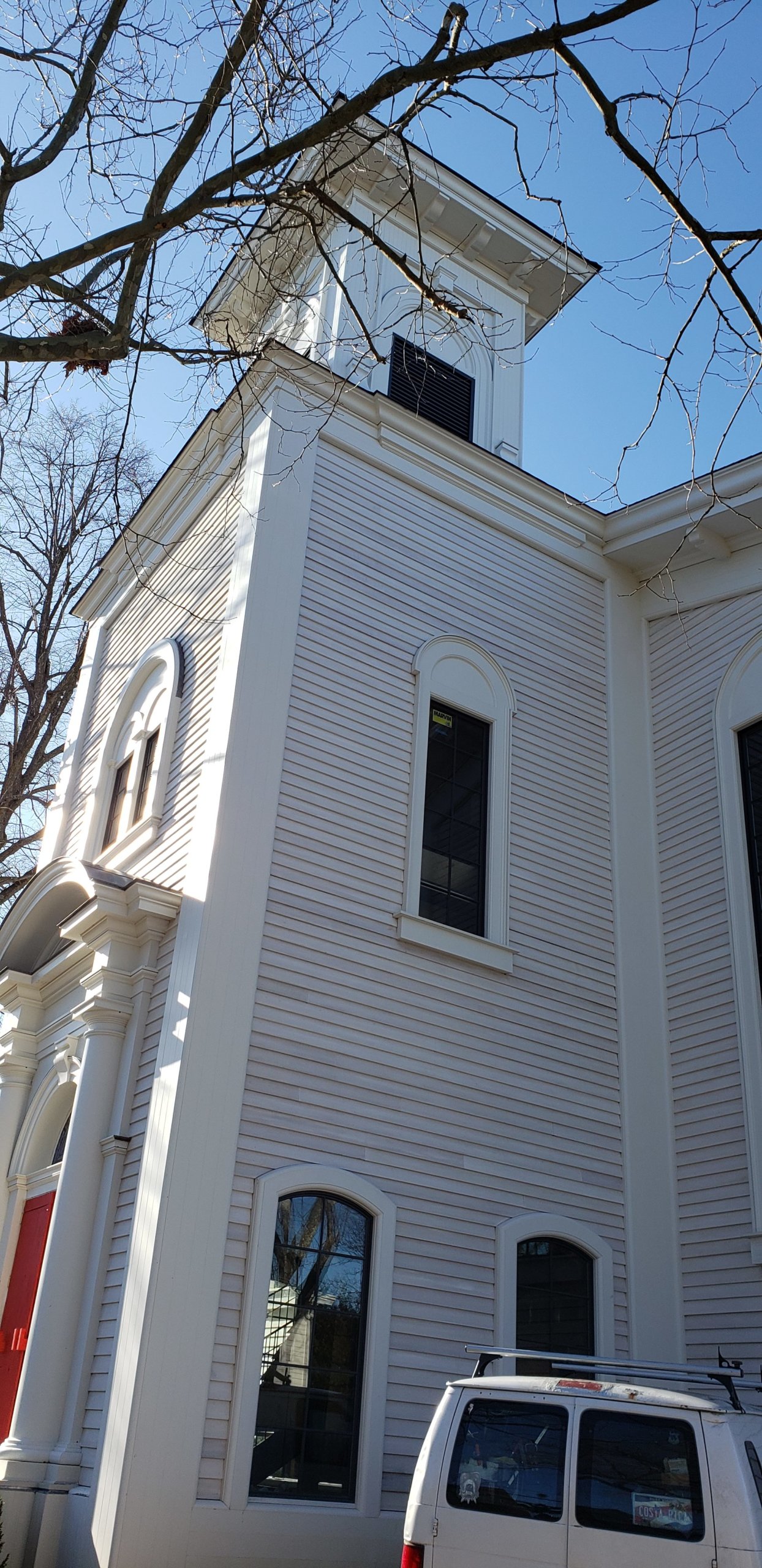Eric Fischl And The Saints Of Sag Harbor

“Never doubt that a small group of thoughtful, committed citizens can change the world. Indeed, it is the only thing that ever has.”
Anthropologist Margaret Mead’s quote still holds true. And nowhere is that more apparent locally than in Sag Harbor, where April Gornik and Eric Fischl have given generously of their time, talent, know-how, and cash to bring the arts and the history of the village even more to the forefront.
While Gornik is currently taking the lead “midtown” with the Sag Harbor Cinema, Fischl is busy “uptown” with the new Prime House Writers’ Retreat at 31 Madison Street, and, diagonally across from that, the old Methodist Church — now known simply as The Church — which has been gutted in preparation for its new role as an arts and culture center.
If it’s possible for a space to be both cozy and cavernous at the same time, architect Lee Skolnick has created it. Construction is well-underway; Fischl is hopeful for a late-April, mid-May finish. In anticipation of that, Sara Cochran has been named as the executive director and chief curator of The Church.
But in the meantime, while still in the nuts and bolts phase, the religious past and the art-as-religion future have intersected within the walls of the former house of worship, particularly in the soaring Arts and Crafts Mission-style windows that could have been designed by Gustav Stickley himself.
The center of each of the 20 windows has a large square of glass; it is there, explained Fischl, where the “arts saints of Sag Harbor, the dead saints, will be canonized.”
And not only the visual artists, but the literary artists are included.
Of course there’s Herman Melville. And John Steinbeck. “They have to have had, genuinely, national or international impact,” Fischl said as he held up his portrait of Melville in front of the window, the light streaming through the author’s beard. He acknowledged that, at first, “I thought we might be stretching it with 20.”
He smiled. “So far, we’re up to 150 who fit the description.”
It goes all the way back, he continued, to James Fenimore Cooper in around 1820 — who married a DeLancey with Sylvester roots (think Shelter Island), and spent enough time out in Sag Harbor to praise it excitedly 30 years later in his book “The Sea Lions.” From then on, artists and writers came to the East End in droves, many taking up residence in Sag Harbor village.
Fischl said he would paint the first 20 saints before handing the baton, or brush, to another artist, perhaps one of the artists-in-residence of The Church, which, when complete, incorporates a few simple bedrooms along with a private living area off the main community space.
Fischl sees The Church being an anchor for the old whaling village. “You’ve got Bay Street down on the wharf,” he said. “Now you’ll have the cinema for film and film education, and at this end, the writers’ retreat and The Church.” He spoke about community outreach and arts education in the schools, but also, “reinventing Sag Harbor as an arts tourism hub. Instead of coming to town for the restaurants, or the water, people will actually come here for the art.”
The exposed beams of the church — some of which are inscribed with initials and dates long past — vibrate with astounding energy, and why wouldn’t they? For over 150 years, hymns resonated throughout the space as church-goers prayed and looked heavenward.
Fischl looked up, at the church bell which can be spied through the beams. “The space is sacred,” he said reverentially. “And art is also sacred.”
Then he smiled again and pulled on the bell rope, hard, and the sound that pealed forth sounded like the start of something exhilarating.
For more information on The Church and the Prime House, visit www.sagharborchurch.org.
bridget@indyeastend.com





















